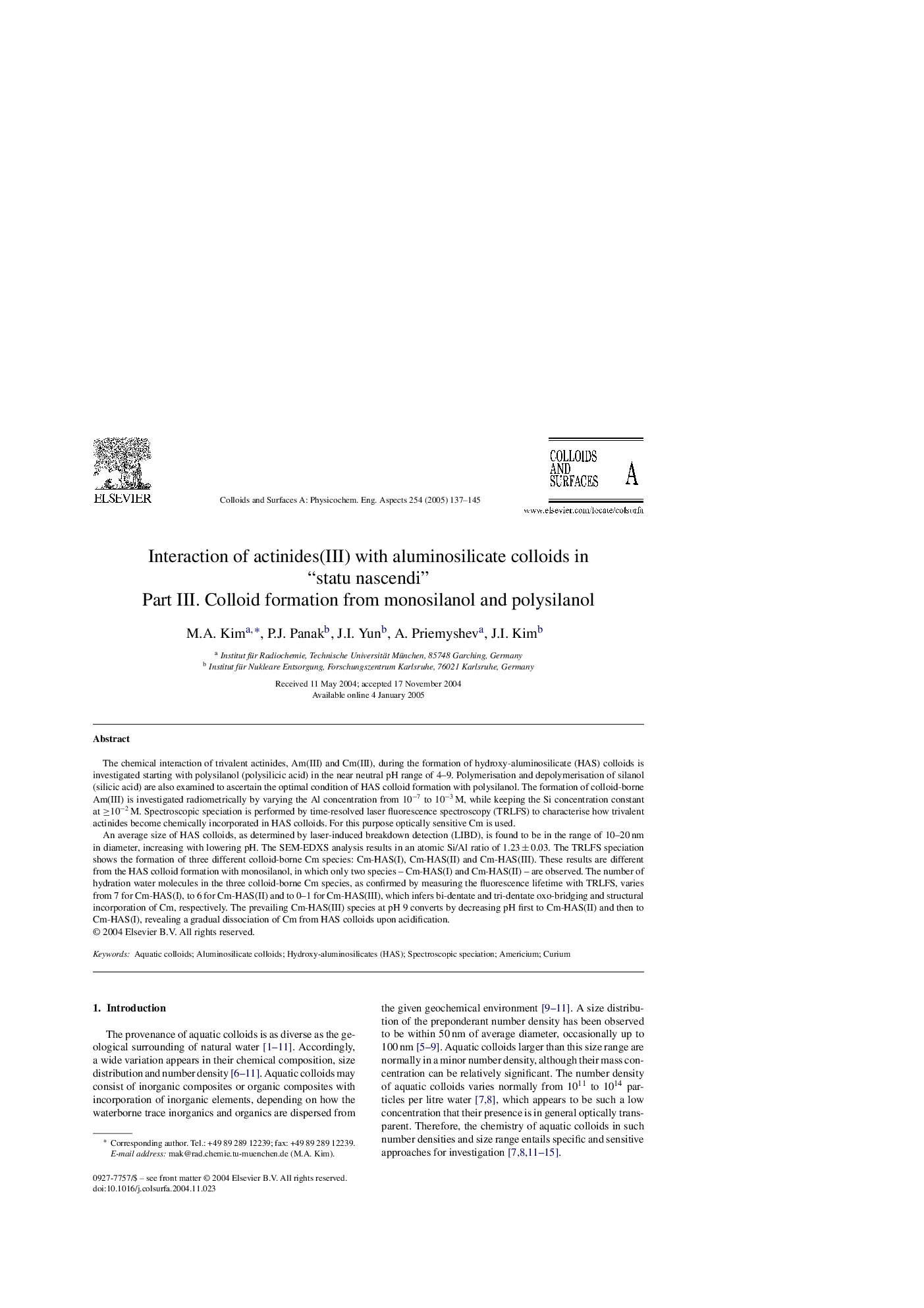| Article ID | Journal | Published Year | Pages | File Type |
|---|---|---|---|---|
| 9676096 | Colloids and Surfaces A: Physicochemical and Engineering Aspects | 2005 | 9 Pages |
Abstract
An average size of HAS colloids, as determined by laser-induced breakdown detection (LIBD), is found to be in the range of 10-20 nm in diameter, increasing with lowering pH. The SEM-EDXS analysis results in an atomic Si/Al ratio of 1.23 ± 0.03. The TRLFS speciation shows the formation of three different colloid-borne Cm species: Cm-HAS(I), Cm-HAS(II) and Cm-HAS(III). These results are different from the HAS colloid formation with monosilanol, in which only two species - Cm-HAS(I) and Cm-HAS(II) - are observed. The number of hydration water molecules in the three colloid-borne Cm species, as confirmed by measuring the fluorescence lifetime with TRLFS, varies from 7 for Cm-HAS(I), to 6 for Cm-HAS(II) and to 0-1 for Cm-HAS(III), which infers bi-dentate and tri-dentate oxo-bridging and structural incorporation of Cm, respectively. The prevailing Cm-HAS(III) species at pH 9 converts by decreasing pH first to Cm-HAS(II) and then to Cm-HAS(I), revealing a gradual dissociation of Cm from HAS colloids upon acidification.
Keywords
Related Topics
Physical Sciences and Engineering
Chemical Engineering
Colloid and Surface Chemistry
Authors
M.A. Kim, P.J. Panak, J.I. Yun, A. Priemyshev, J.I. Kim,
